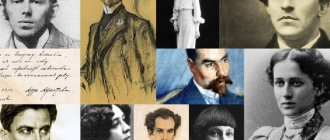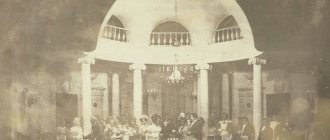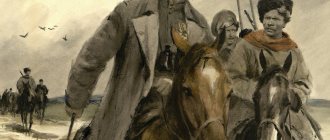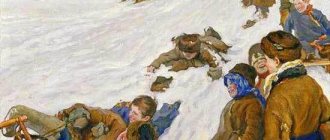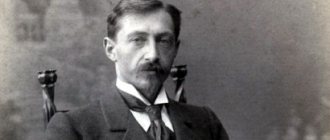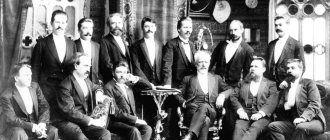"War and Peace": Tolstoy did not realize the scale of his creation
This year marks 165 years since Leo Tolstoy first thought about the idea of the work that later resulted in the famous epic novel War and Peace.
Most Russian readers are familiar with both the content and characters of the book, which covers the life of Russian society in 1805-1812, including the Patriotic War with Napoleon Bonaparte, from their school years. Much fewer people know the history of its creation... The failed “Decembrists”
The idea for an epoch-making work arose from Tolstoy back in 1856. Initially, he planned to write a story about a Decembrist returning with his family to Russia. “Involuntarily, I moved from the present to 1825,” writes Tolstoy in the preface to the novel. “But even in 1825, my hero was already a mature, family man. To understand him, I needed to travel back to his youth, and his youth coincided with... the era of 1812...”
In the end, the writer decided that the narrative should begin no later than 1805. He began working on the story several times, which by the beginning of 1861 was already being conceived as a novel. At this time, Tolstoy read chapters from the novel “The Decembrists” to Turgenev and Herzen. But it was only in 1863 that he began to work on the work in earnest. It was completed in 1869. At first, the writer wanted to make “War and Peace” only part of the story of Pierre and Natasha Bezukhov, who returned from Siberian exile in 1856. He returned to this idea again in the late 1870s. But it didn’t work out...
However, the book was already a phenomenal success. An excerpt from it (the novel was then called “1805”) was first published in 1865 in the Russian Messenger. In 1868, three parts of the book were published, a little later - the remaining two... Tolstoy changed the titles several times: such variants as “All’s well that ends well” and “Three Times” are known.
The title “War and Peace” is, at first glance, completely transparent. In the book, pictures of battles and military life alternate with episodes of a completely peaceful existence: the same Scherer salon, scenes from the life of aristocrats and landowners... It is interesting that each reader is attracted to something different in the novel: as a rule, when the book begins at school, boys they like to read more “about the war”, girls - about Natasha Rostova and her relationship with Andrei Bolkonsky and Pierre Bezukhov. And one teacher from our school once asked me to write an essay on “War and Peace” for her son, using the hunting scene as a basis. It turned out that it was her favorite...
However, surveys show that many of our compatriots have never read “War and Peace” at all, making do with what is written in textbooks and excerpts from anthologies. Now it’s even easier - you can read a summary of any classic work on the Internet. But it’s unlikely that you will then be able to feel its full depth...
Let's go back to the title. It is not at all so clear. And that's why. In modern Russian, the word “peace” simultaneously denotes the antonym of war, as well as the world in the broadest sense, for example, the Universe, globe, society or habitat... Before the spelling reform of 1917-1918, the word “peace” was written in various meanings in differently: in the first case - “world”, in the second - “mir”. There is a legend that Tolstoy used the second option. But in all lifetime editions the novel was published under the title “War and Peace.” The book allegedly owed this to errors and typos that arose due to the fault of other people involved in the publication of the novel. Among them are the publishers M.N. Katkov and P.I. Biryukov, Sofya Andreevna Tolstaya and even the religious philosopher Georgy Florovsky...
Versatility
When working on the novel, the writer used many different sources. This is an academic history of the war by academician A.I. Mikhailovsky-Danilevsky, history of M.I. Bogdanovich; works of French historians; numerous testimonies of contemporaries of the Patriotic War of 1812 - Alexei Bestuzhev-Ryumin, Denis Davydov, Alexei Ermolov and others; as well as a number of memoirs and works of fiction.
There are 559 characters in the book, and about 200 of them are historical figures. All social strata of society are represented here, from emperors and aristocracy to soldiers and peasants.
“War and Peace” is a multifaceted work: it is at the same time a historical, philosophical, family, psychological novel... The author tries, through the prism of both historical events and episodes from the private life of an individual, to philosophically comprehend the global laws of existence... Tolstoy paid special attention to folk psychology, as well as the phenomenon of the spontaneous and unconscious in human life. He tries to answer the question about the driving forces of history, about the role of the individual in the historical process.
According to the author, individuals only fulfill the will of the people and thereby make history. Thus, Kutuzov, who realized the liberating nature of the war with the French, becomes the winner, and Napoleon, who cares only about personal glory and power, faces a fiasco... Platon Karataev appears as the bearer of the highest wisdom in Tolstoy - after all, he recognizes himself as a part of the whole, without claims to individuality: “ His life, as he himself looked at it, had no meaning as a separate life... It made sense only as a particle of the whole, which he constantly felt.”
Second "I"
Pierre Bezukhov is, of course, closest to the writer himself - Tolstoy puts his own philosophical reflections into his mouth: “On earth, precisely on this earth... there is no truth - everything is lies and evil; but in the world, in the whole world, there is a kingdom of truth...”
Spiritual quests lead Bezukhov to the Masonic Order, where he takes the selfless path of spiritual knowledge and service to people. However, Bezukhov gradually realizes that many “brothers” join the order only looking for benefits and acquaintances with influential people, and their membership is purely formal. Tolstoy himself was not a Freemason, but he was in many ways close to the ideas of Freemasonry, which especially flourished at the beginning of the 19th century, under Alexander I. By the way, some real persons depicted in the novel belonged to the Masonic orders - in particular, Alexander I himself and M. AND. Kutuzov. The latter was awarded the seventh degree of Freemasonry in Sweden and given the order name Green Laurel, as well as the motto “Glorify yourself with victories.” The further life of the famous commander was fully consistent with this saying...
"Rubbish"
The book, with the exception of the episode with Platon Karataev, contains almost no features of the so-called Tolstoyism: this worldview, implying pacifism and “non-resistance to evil through violence,” was formed by Tolstoy only in the 1880s... In “War and Peace” there is a completely different main philosophical message. The novel expresses the main thesis of Tolstoy's philosophy: “The Kingdom of God is within us.” It was he who gave impetus to the concept of “macrocosm and microcosm” in Russian cosmism, later developed by the philosophers Pavel Florensky and Lev Karsavin...
It is curious that Lev Nikolaevich himself did not at all consider “War and Peace” one of his most significant works, and even once said that “he would no longer write such rubbish.” However, the creator is not always able to objectively assess the scale of his creation...
Belinsky. Works of Alexander Pushkin Comments
CommentsArticle one “Domestic Notes”, 1843; Vol. XXVIII, book. VI, dept. V, pp. 19-43 (censored May 31, 1843); article two - 1843, volume, XXX, book. IX, Dept. V, pp. 1-60 (censored August 31, 1843); article three - 1843, vol. XXX, book. X, dept. V, pp. 61-88 (censored - September 30, 1843); article four - 1843, vol. XXXI, book. XII, dept. V, pp. 25-46 (censored November 30, 1843); article five - 1844, vol. XXXII, book. II, dept. V, pp. 43-81 (censored January 31, 1844); article six - 1844, vol. XXXIII, book. III, dept. V, pp. 1-20 (censored February 29, 1844); Article seven - 1844, vol. XXXIV, book. V, dept. V, pp. 1-33 (censor. April 30, 1844); Article eight - 1844, vol. XXXVII book. XII, dept. V, pp. 46-72 (censored November 30, 1844); article nine - 1845, vol. XXXIX, book. III, dept. V, pp. 1-20 (censored February 28, 1845): article ten - 1845, vol. XLII, book. XI, dept. V, pp. 1-22 (censored October 31, 1845); eleventh and last article - 1846, vol. XLVIII, book. X, dept. V, pp. 41-68 (censored September 30, 1846).
All articles were published without a signature
Articles about Pushkin were republished several times in Soviet times in the “Collected Works of V. G. Belinsky”, edited by Ivanov-Razumnik, 1919, volume III, collection “V. G. Belinsky. Works of Alexander Pushkin”, edition, preface and notes by N. I. Mordovchenko, 1937, in “Selected Works”, edited and with comments by D. D. Blagoy and A. Lavretsky, 1941, volume III, in the one-volume “Selected Works” V. G. Belinsky" with an introductory article and notes by F. M. Golovenchenko, 1947.
"Domestic Notes" in 1843-1846. The last article of this cycle appeared in the October book of the magazine in 1846, when Belinsky had already broken off all relations with his publisher Kraevsky.
The idea of writing a special article or a series of articles about Pushkin arose from Belinsky almost at the very beginning of his career. Even in the article “Nothing about Nothing” (1836), touching on the connection between Pushkin’s poetry and Russian romanticism, Belinsky noted: “This issue will be discussed in detail by us in a special article about Pushkin, which is already being written.”
In 1837 he reported to Mich. Bakunin: “I’ll soon start writing an article about Pushkin. This should be my best critical article” (“Letters”, vol. I, p. 138). Pushkin was also the focus of Belinsky’s attention in 1841, when he planned to write a “Critical History of Russian Literature.” The name of Pushkin literally does not leave the pages of Belinsky’s articles.
Belinsky deeply felt the connection of his criticism with Pushkin’s artistic experience. Through Pushkin, the whole perspective of the development of Russian literature was revealed to him. The first article begins with a characteristic confession of the critic: “The more we thought about Pushkin, the more deeply we saw a living connection with the past and present of Russian literature and became convinced that writing about Pushkin means writing about the whole of Russian literature: for how do previous Russian writers explain Pushkin “This is how Pushkin explains the writers who followed him.” Only after understanding the historical significance of Pushkin, Belinsky was able to accurately identify everything truly valuable in contemporary Russian literature.
The content of articles about Pushkin is broader than their title. Belinsky, in essence, gave the history of all Russian literature before Pushkin and showed the formation of its artistic realism. Along with revealing the significance of Pushkin’s work, Belinsky gave brilliant assessments to such major writers and poets of the pre-Pushkin era as Derzhavin, Karamzin, Zhukovsky, Batyushkov. Articles about Pushkin are still an unsurpassed example of a combination of historical and aesthetic criticism.
Belinsky equally dissociates himself both from the petty, picky, relativistic contemporary criticism, and from attempts to present Pushkin as an imitator of either Byron or Walter Scott. Ready to recognize in many ways the “imitation” of Russian literature of the 18th century, Belinsky completely denies imitation in Pushkin. Original Russian literature begins with Pushkin. Belinsky reveals the historical pattern of the emergence of original Russian poetry: “Pushkin appeared precisely at a time when the emergence of poetry as an art in Rus' had just become possible. The twelfth year was a great era in the life of Russia. In terms of its consequences, it was the greatest event in the history of Russia after the reign of Peter the Great. The intense struggle to the death with Napoleon awakened the dormant forces of Russia and forced it to see in itself forces and means that it had not previously suspected in itself.”
Noting the national significance of Pushkin, Belinsky was at the same time well aware that Pushkin was connected with the historical destinies of his own, the landowner class and that “educated” society that emerged as a result of the reforms of Peter I.
The sociological interpretation of Pushkin was most clearly manifested in articles about “Eugene Onegin”. Emphasizing the humanism and nationality” of Pushkin, Belinsky pointed to their class-class basis: “In this class he attacks everything that contradicts humanity, but the principle of class for him is the eternal truth. And that is why there is so much love in his satire itself, his very denial so often looks like approval and admiration.
“principle” of class, Belinsky is far from the vulgarization of Pushkin’s work that was characteristic of some critics later.
“enlightened” noble society in the era of Pushkin. Moreover: Pushkin rose to immeasurable heights above the prejudices of his class and reflected one of the moments in the life of Russian society with encyclopedic completeness.
The articles were written over more than three years. Naturally, even with the unity of the general plan, Belinsky’s point of view on Pushkin changed over the years. Belinsky moved towards an increasingly deeper, historical and sociological interpretation of his work from the position of a democrat of the 40s. The amazing breadth of Belinsky's approach to resolving the topic at hand is visible in the very outline of the articles.
In the first article, Belinsky touches on the literature of the 18th century, noting in it two directions coming from Kantemir and Lomonosov, one satirical and the other “singing of praise,” which partially merged in the poetry of Derzhavin, but gave a real artistic synthesis only in the work of Pushkin. In the second article, moving on to characterize Zhukovsky, Belinsky develops his original concept of romanticism (see note 216). Almost the entire third article is devoted to Batyushkov, Pushkin’s direct predecessor. The actual study of Pushkin’s work begins with the fourth article. The fifth article opens with a statement of Belinsky's critical credo. The center of this article is the critic’s remarkable discussion about the pathos of poetry, in general, and Pushkin’s poetry in particular (see note 328). In the sixth and seventh articles, Belinsky examines Pushkin's poems, tracing the gradual development of his realism. The true pinnacle of the entire Pushkin cycle is the eighth and ninth articles, which deal with “Eugene Onegin.” This is still, in many respects, the best of everything written about Pushkin’s novel. The tenth article is dedicated to “Boris Godunov”. Gradually, articles about Pushkin outgrew the previously outlined framework. Therefore, in the spring of 1846, leaving “Notes of the Fatherland”, Belinsky was supposed to review in the last (eleventh) article all the remaining unexamined works of Pushkin, among which were such masterpieces as “The Bronze Horseman”, small tragedies, “The Queen of Spades”, “Captain’s daughter". Naturally, Belinsky had to limit himself to cursory and brief remarks about the named works.
Not all of Pushkin’s creative heritage is assessed by Belinsky with equal strength and depth. Belinsky, for example, clearly underestimated the “free” poetry, fairy tales and prose of Pushkin. He almost did not reveal the poet’s connection with the Decembrist movement. However, this does not reduce the enormous value of his critical judgments about Pushkin. Finishing your work. Belinsky emphasized that the task of determining the historical and artistic significance of the poet in no case can be considered already solved. Pushkin belongs to the eternally young geniuses who are developing in the consciousness of subsequent generations. Each of them will make their own judgment about the poet, and this judgment will never be final and exhaustive. For Belinsky, Pushkin was a symbol of the high talent of the Russian people.
